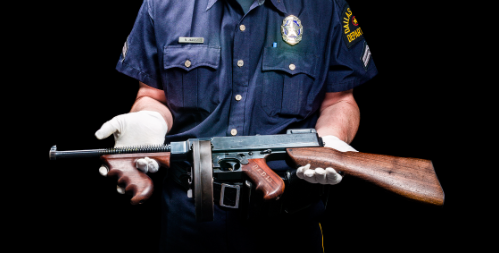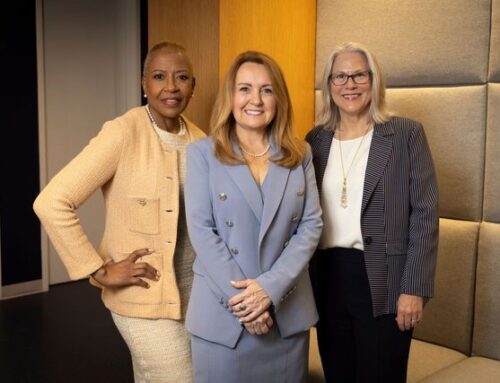In our November cover story, we share a little bit about the history of violence in the neighborhood and the police department’s efforts to end it. As we promised in print, below is a little extra about the shotgun squads of the 1960s. Read the full story here. Contribute to the Dallas Police Museum fund here:
Remembering the shotgun squads, by Brittany Nunn
In the mid-1960s, armed robberies became a problem at convenience stores, restaurants and liquor stores, according to Sr. Cpl. Roderick Janich, who curates the Dallas Police Department museum.
Robbers would walk into a store, shoot the clerk at point-blank range and then empty the register. The death toll was rising, and the Police Department intended to stop it.
Lts. Herman Holloway, Jay Finley and Harry Dean Thomas came up with a solution: shotgun squads.
Patrol officers would work overtime — a competitive status among officers — to aid shotgun detail, Janich says.
The shotgun squads involved dangerous stakeouts during which officers would camp out for hours at a convenience store or restaurant, often in less than desirable conditions, and wait for a shooter.
Although it seems like an undesirable job, Janich says the officers usually jumped at the opportunity for overtime and extra money.
Sometimes the officers would sit in dark alcoves, storage rooms or freezers, and they joked that the process was “seven hours of boredom and three seconds of sheer terror when confronting a hijacker,” according to a retired sergeant, T. Wafer, who picked up shifts with the shotgun squad whenever he could.
“Back then, they shot felons. You came in, boom, they shot you. They didn’t mess around.
Different time, different place.”
Wafer was eventually promoted to supervisor, surveying possible shooting locations.
“I had walls and two-way mirrors installed at the sites’ expense,” Wafer says. “They wanted the protection for their employees. We had chairs installed and other things to make an officer comfortable in these long, boring stakeouts.”
When the time came, the officers didn’t hesitate to shoot the robber where he stood.
Today, officer-involved shootings are met with scrutiny by the media, the public and the Police Department, but things were different in the 1960s.
“Back then, they shot felons,” Janich says. “You came in, boom, they shot you. They didn’t mess around. Different time, different place.”
Once word spread, the fear that there may or may not be officers camping out at any given convenience store was enough to cause the number of armed robberies to plummet.
Although shotgun squads no longer exist, a police presence at convenience stores still deters unwanted activity.
“The concept is still used today for crime prevention,” Janich says. “Convenience store clerks will hang old police jackets in their stores, just to give the idea: ‘Is there a police officer here?’ We went through a phase one time where we’d put cardboard cutouts of police officers in convenience store windows. And, of course, decoy cars in shopping centers.”






